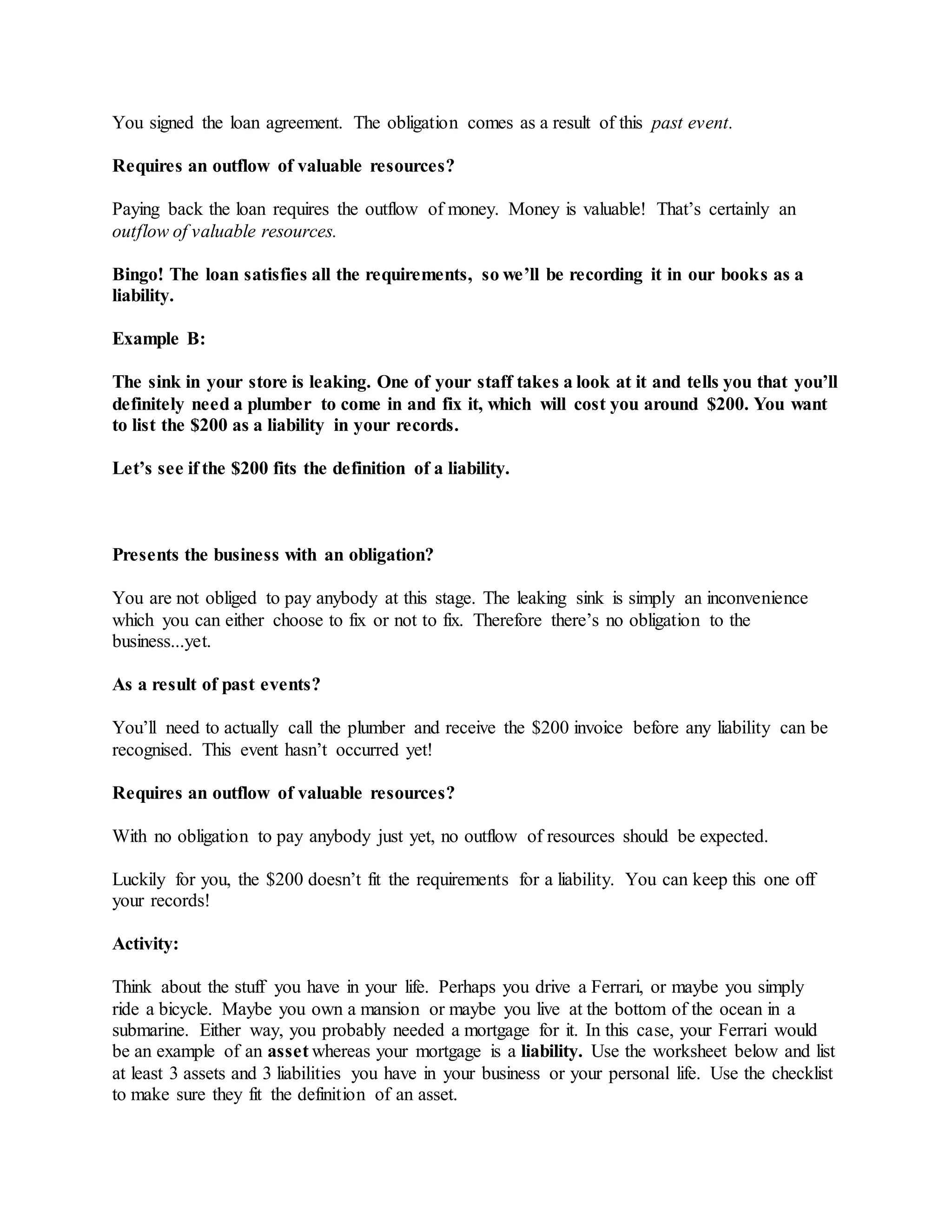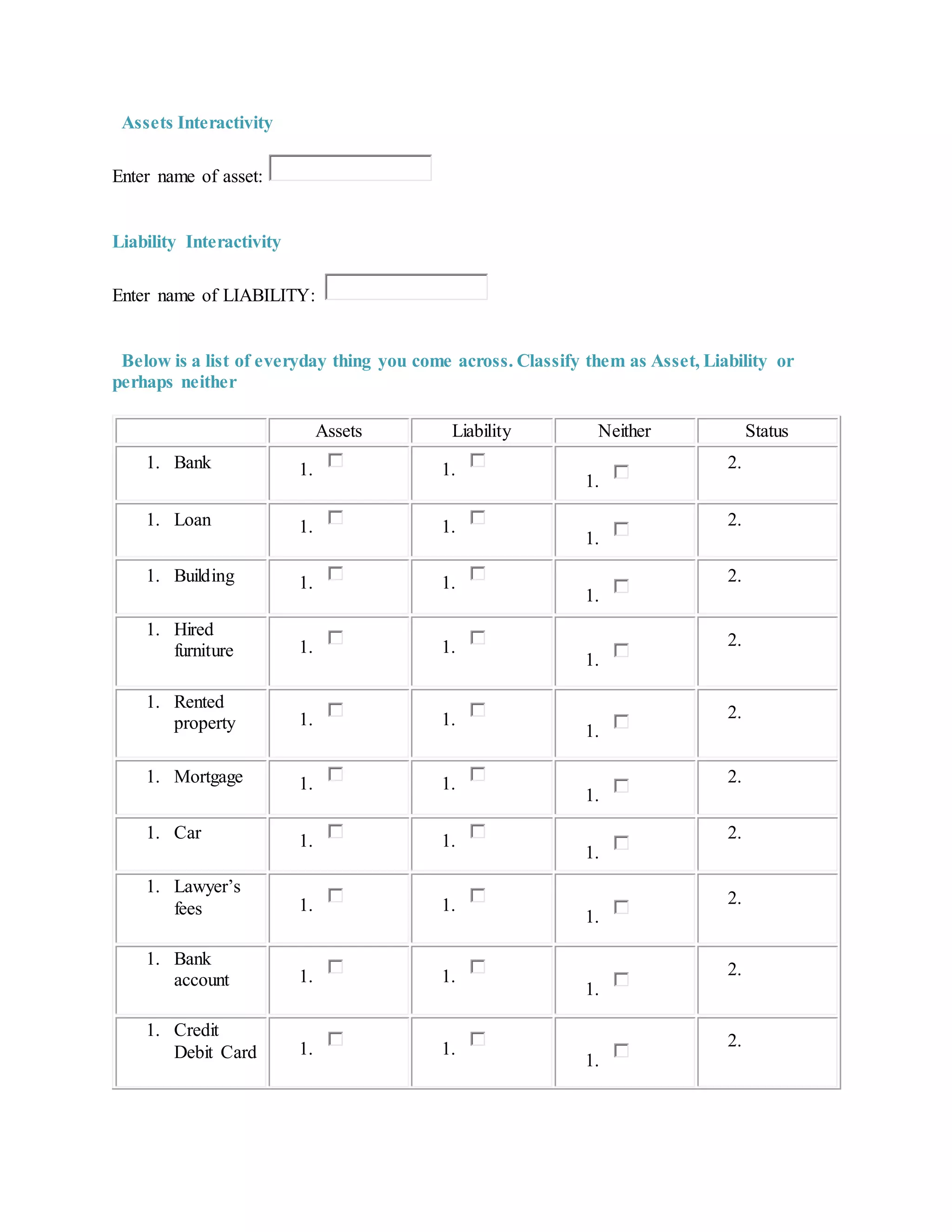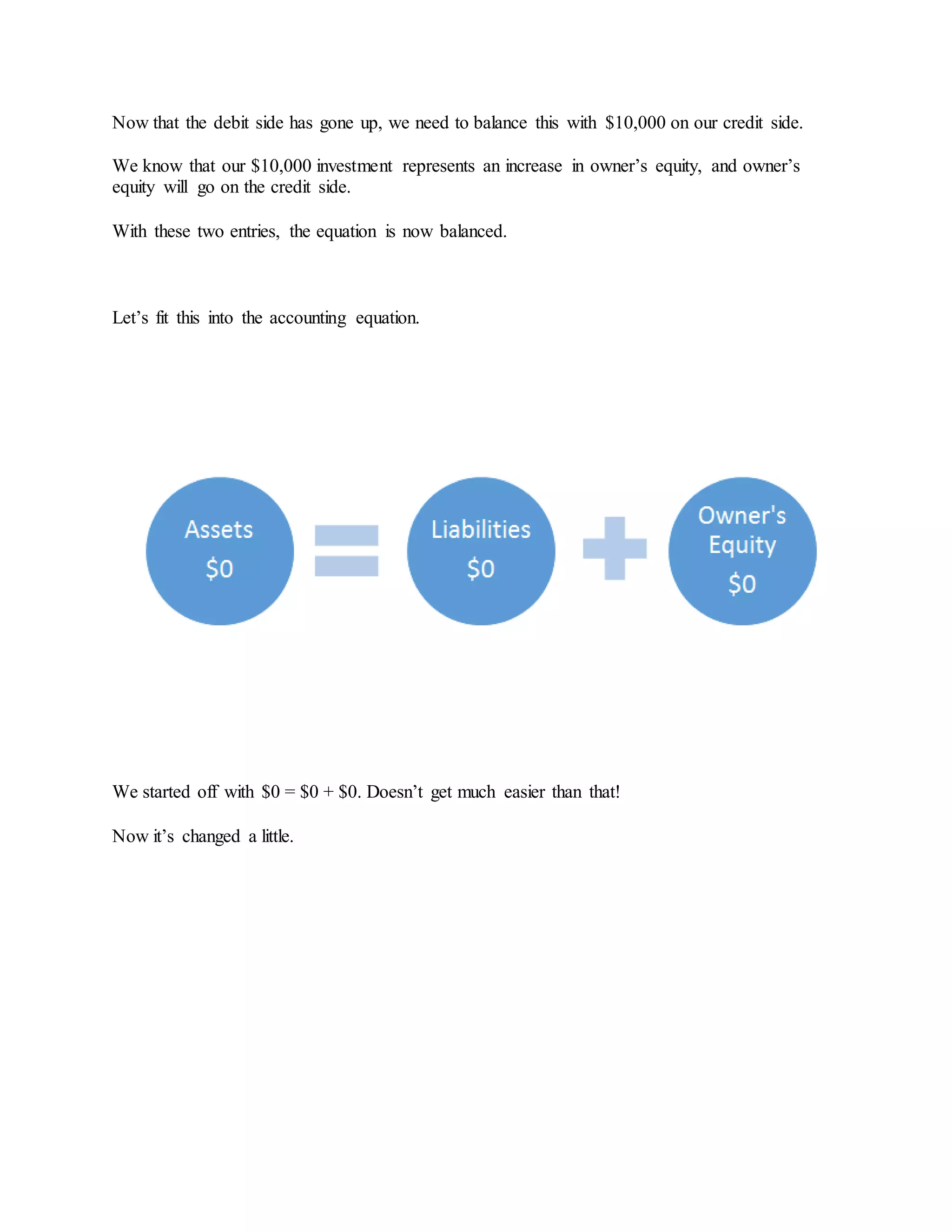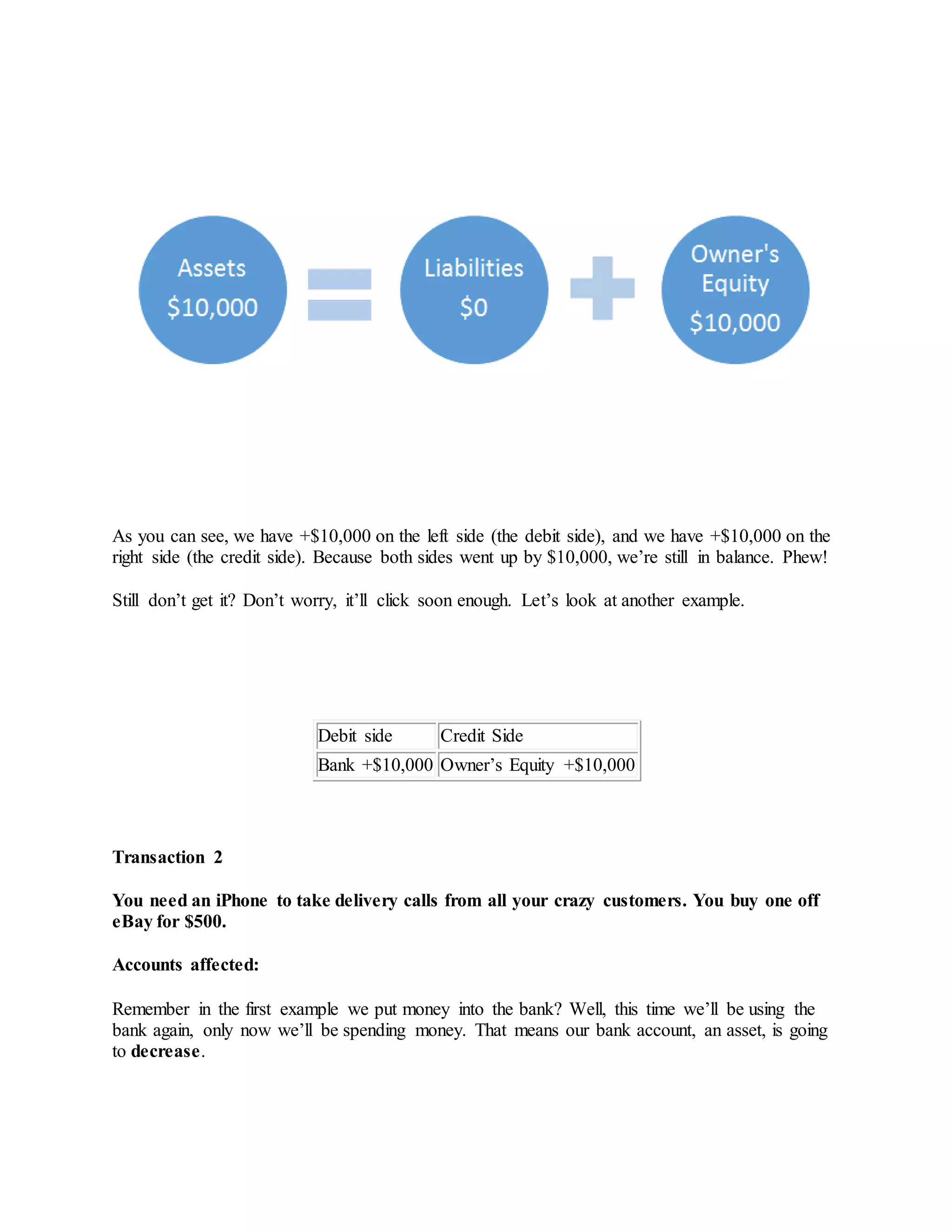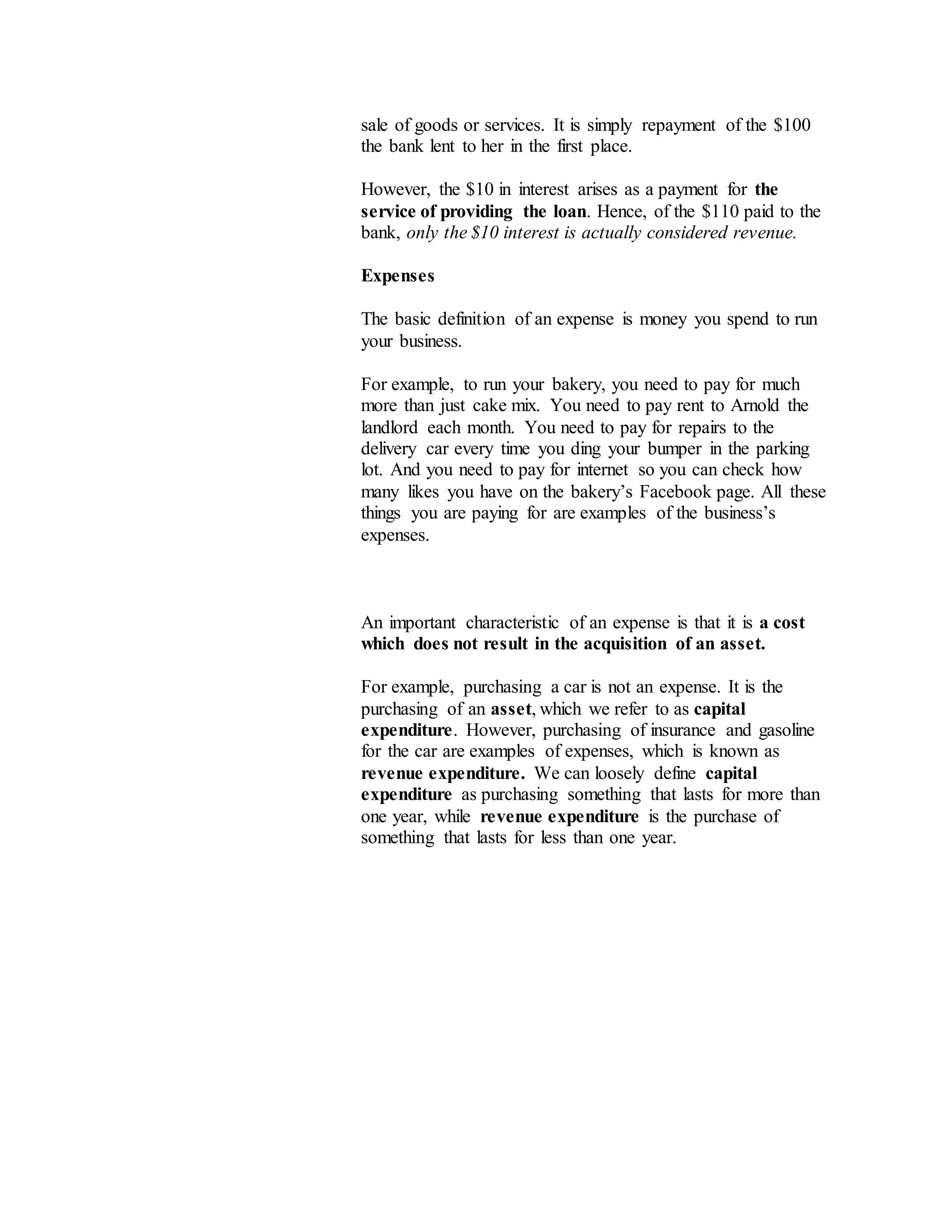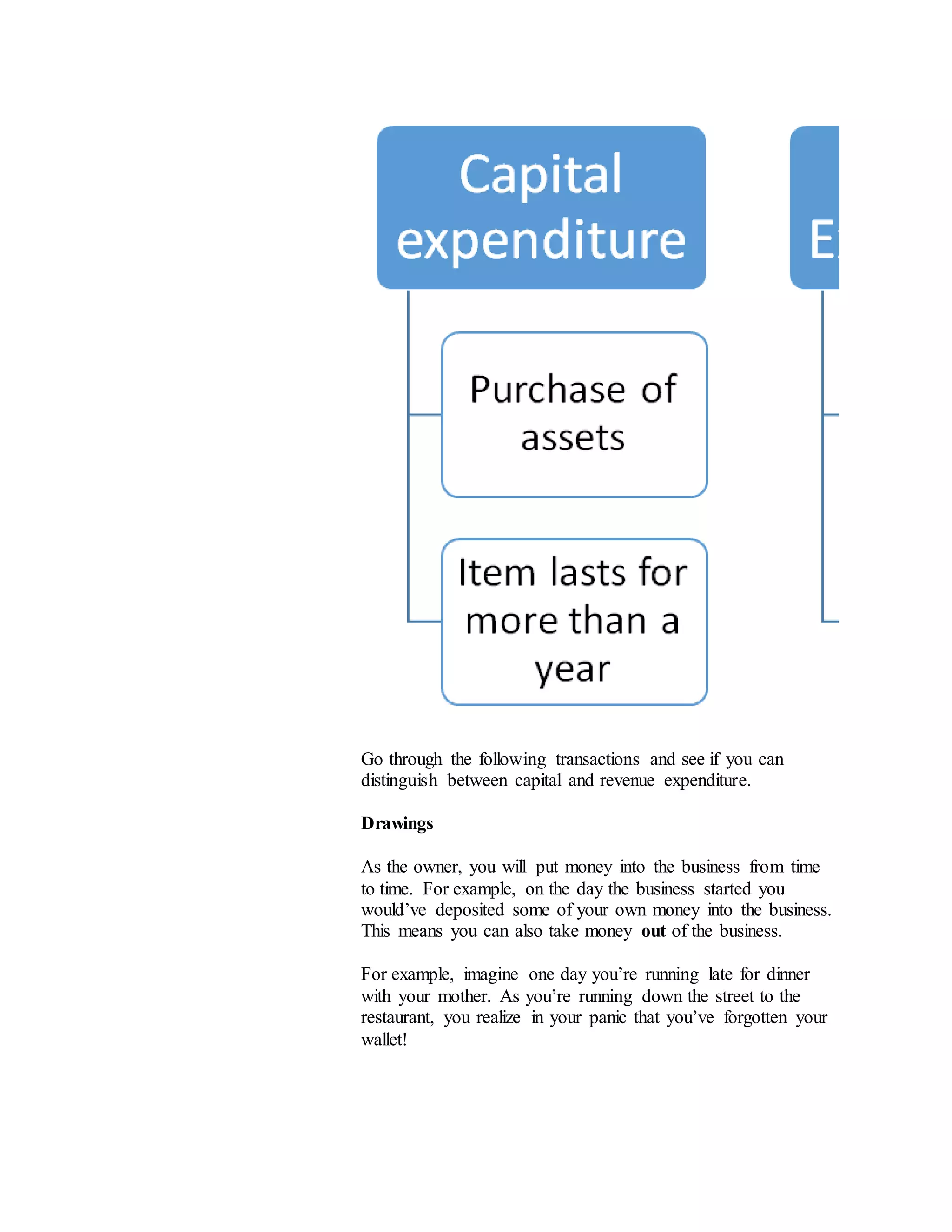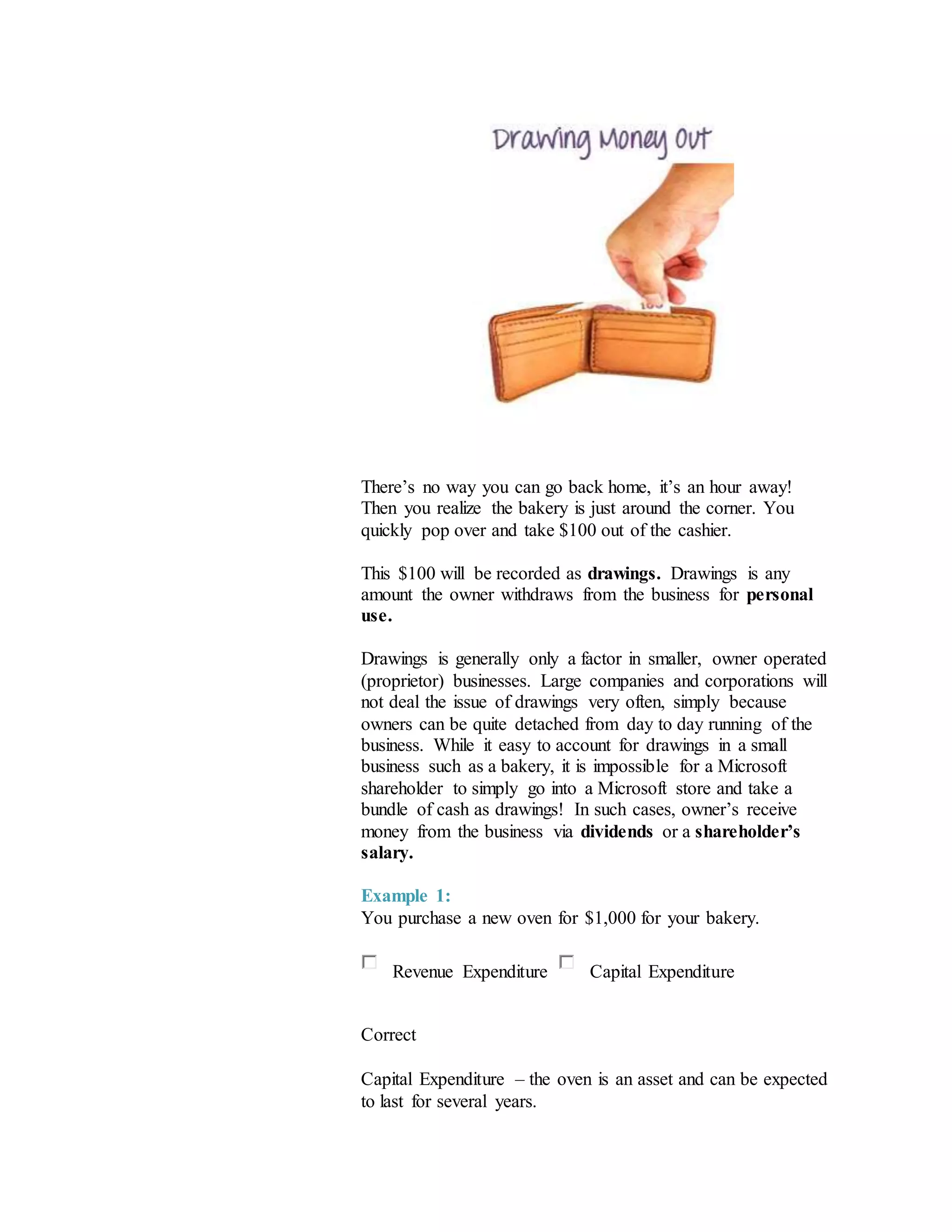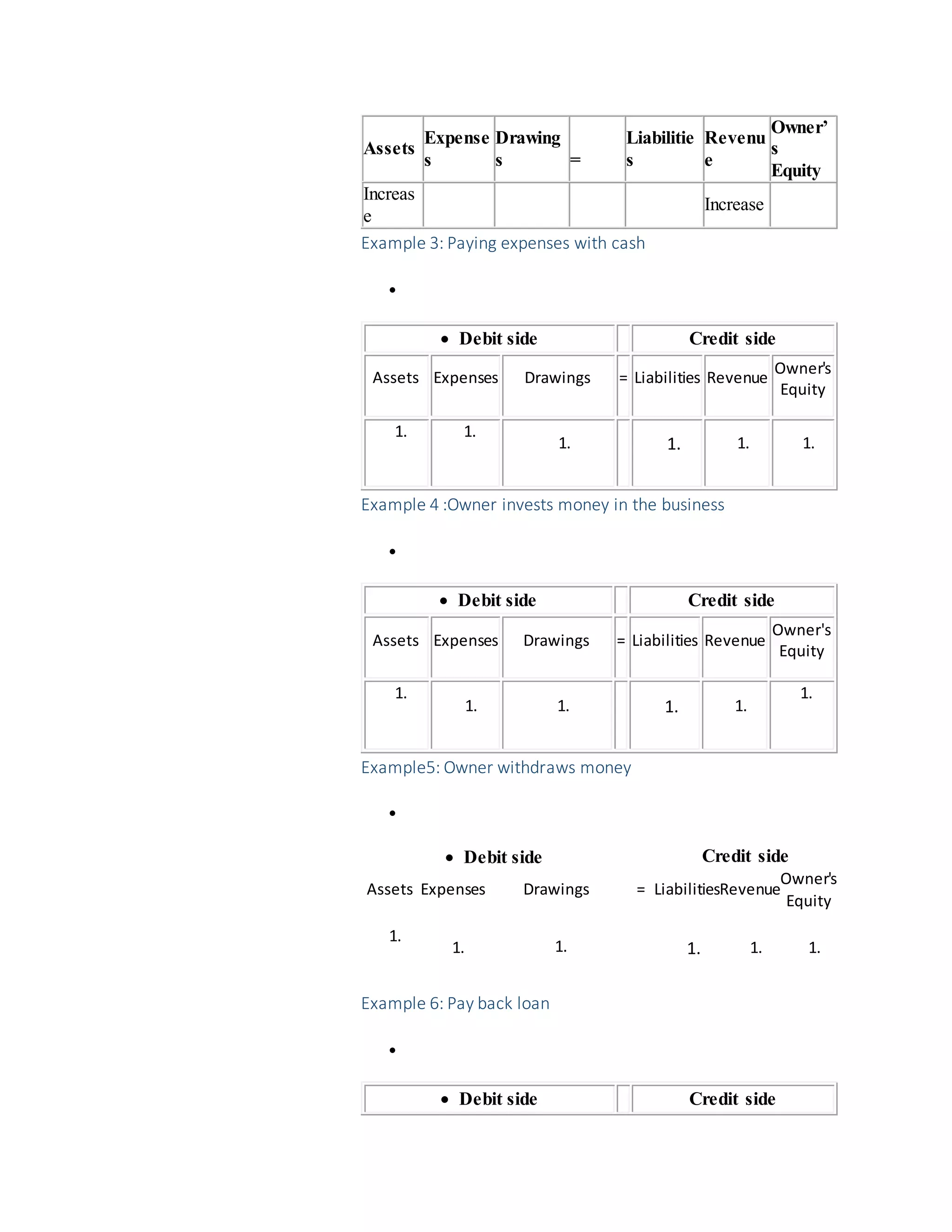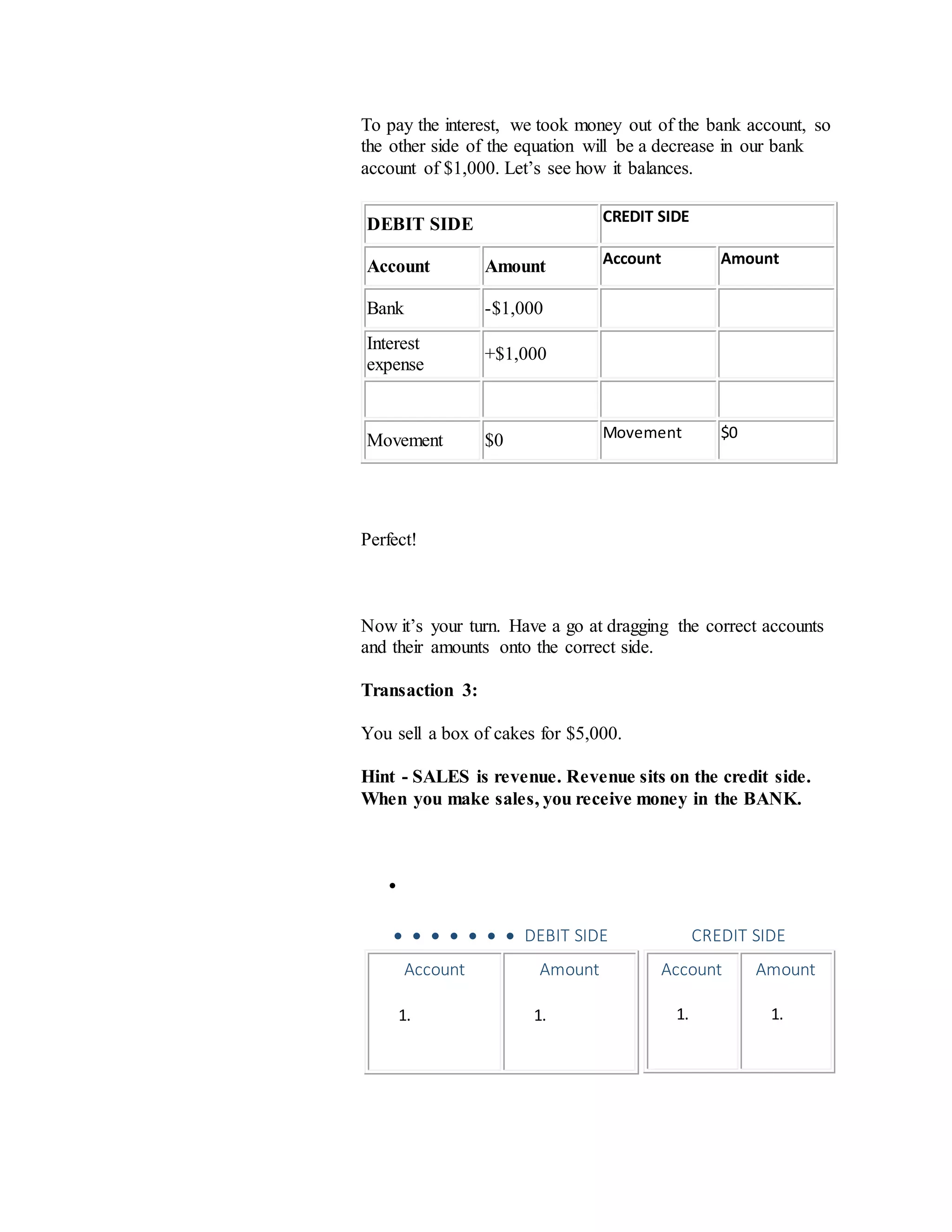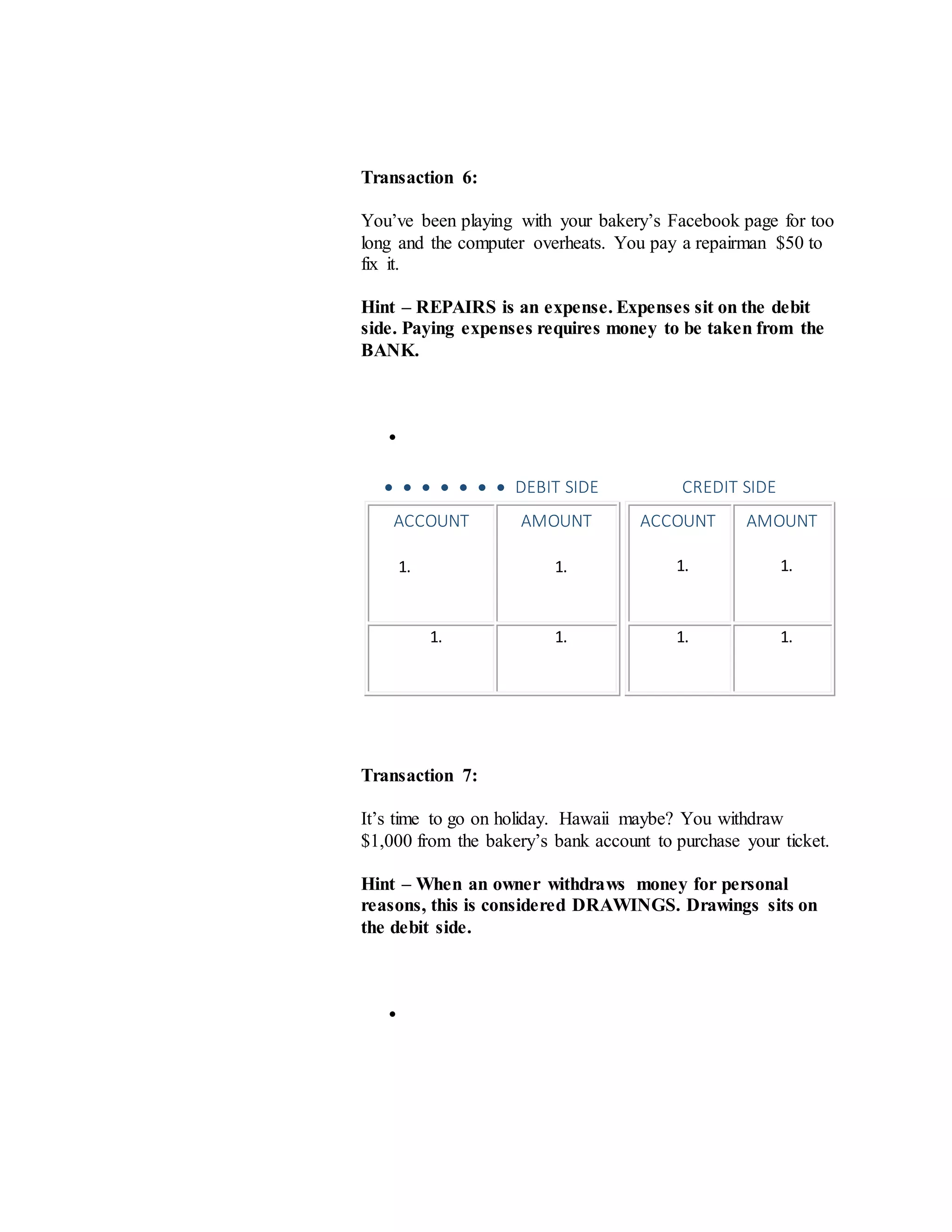The document defines assets and liabilities in accounting. Assets are things owned by a business that provide future economic benefit, such as equipment. To be an asset, an item must be controlled by the business, result from a past transaction, and provide future economic benefit. Liabilities are obligations owed by the business, such as loans. To be a liability, an obligation must result from a past transaction and require an outflow of resources to settle. The accounting equation, Assets = Liabilities + Owner's Equity, must always balance, with assets on the left debit side and liabilities and owner's equity on the right credit side.



